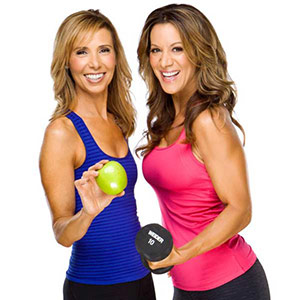VersaClimber a new addition to Fitness Resources
VersaClimber is a total body climbing exercise machine providing a alternating arm and leg action against gravity and variable stroke length and speed. All the major muscles of the arms shoulders, back, chest, hips, buttocks, and legs are used while climbing.









 The Nutrition Twins ContributorTammy Lakatos Shames and Elysse (“Lyssie”) Lakatos, The Nutrition Twins®, share a passion to teach people how to eat healthfully and exercise so they’ll have energy to live happy lives. The twins have been featured as nutrition experts on Good Morning America, Discovery Health, Fox News, NBC, Bravo, CBS, The Learning Channel, FitTV, Oxygen Network, and Fox & Friends. They co-wrote The Nutrition Twins Veggie Cure: Expert Advice and Tantalizing Recipes for Health, Energy and Beauty, The Secret to Skinny: How Salt Makes You Fat and the 4-Week Plan to Drop A Size & Get Healthier with Simple Low Sodium Swaps. The twins are both ACE Certified Personal Trainers, and members of the American Dietetic Association and several Dietetic Practice Groups.
The Nutrition Twins ContributorTammy Lakatos Shames and Elysse (“Lyssie”) Lakatos, The Nutrition Twins®, share a passion to teach people how to eat healthfully and exercise so they’ll have energy to live happy lives. The twins have been featured as nutrition experts on Good Morning America, Discovery Health, Fox News, NBC, Bravo, CBS, The Learning Channel, FitTV, Oxygen Network, and Fox & Friends. They co-wrote The Nutrition Twins Veggie Cure: Expert Advice and Tantalizing Recipes for Health, Energy and Beauty, The Secret to Skinny: How Salt Makes You Fat and the 4-Week Plan to Drop A Size & Get Healthier with Simple Low Sodium Swaps. The twins are both ACE Certified Personal Trainers, and members of the American Dietetic Association and several Dietetic Practice Groups.
